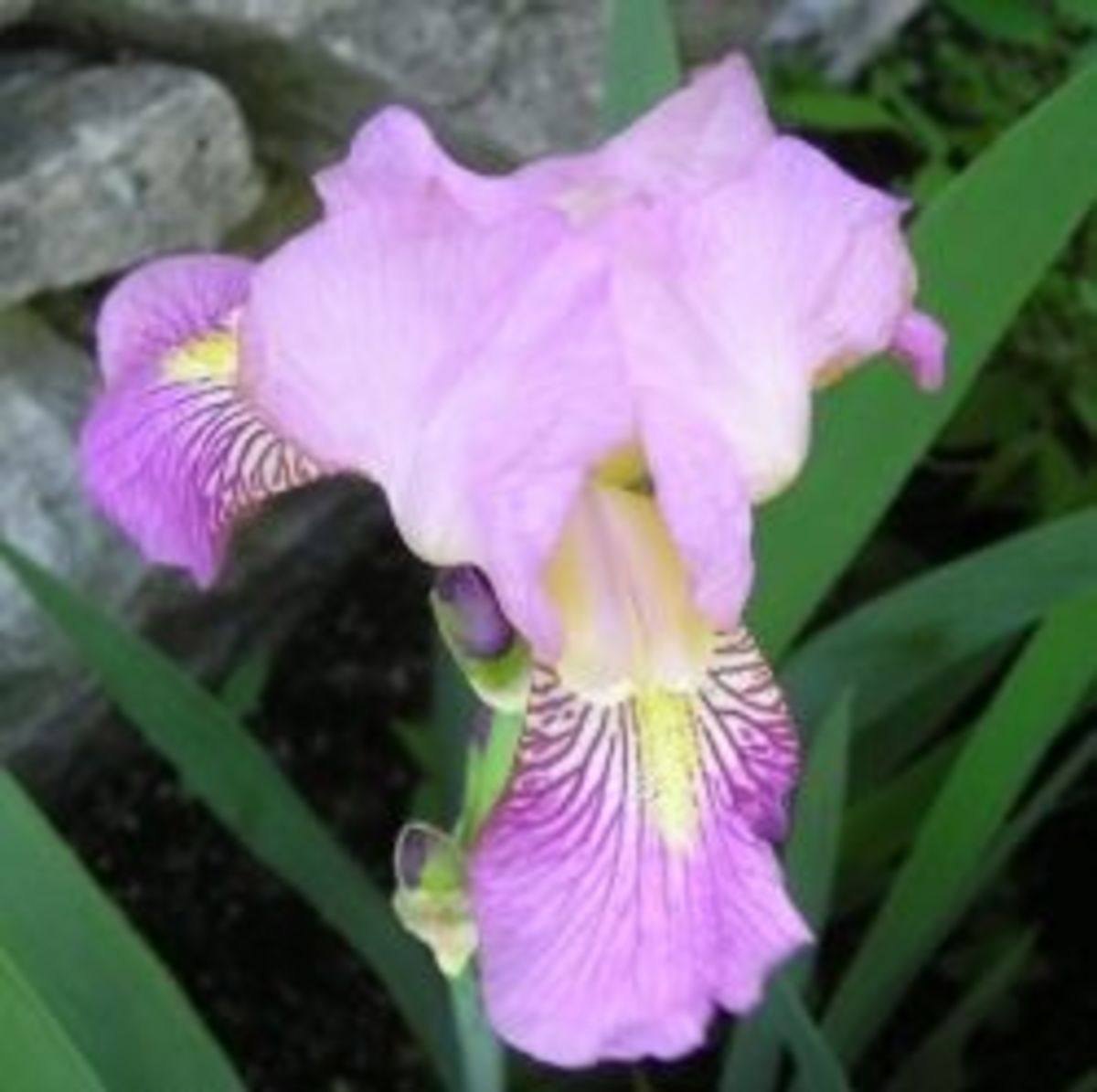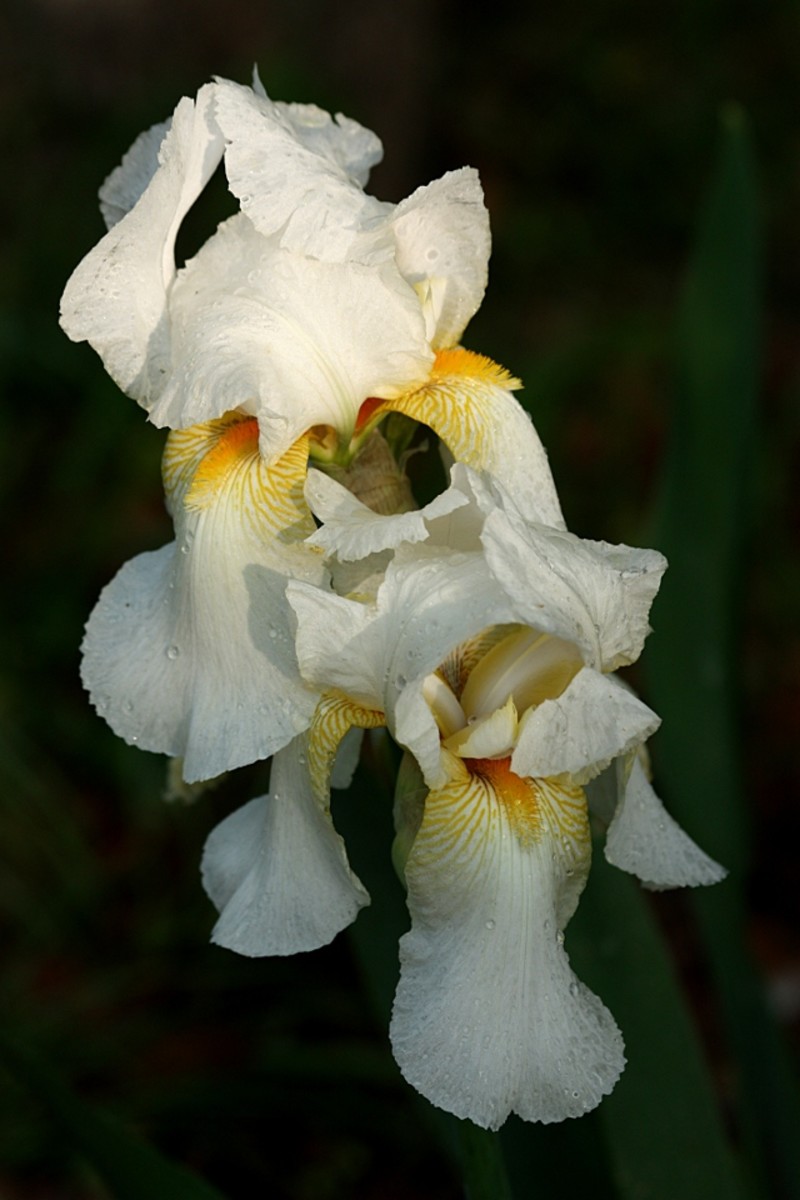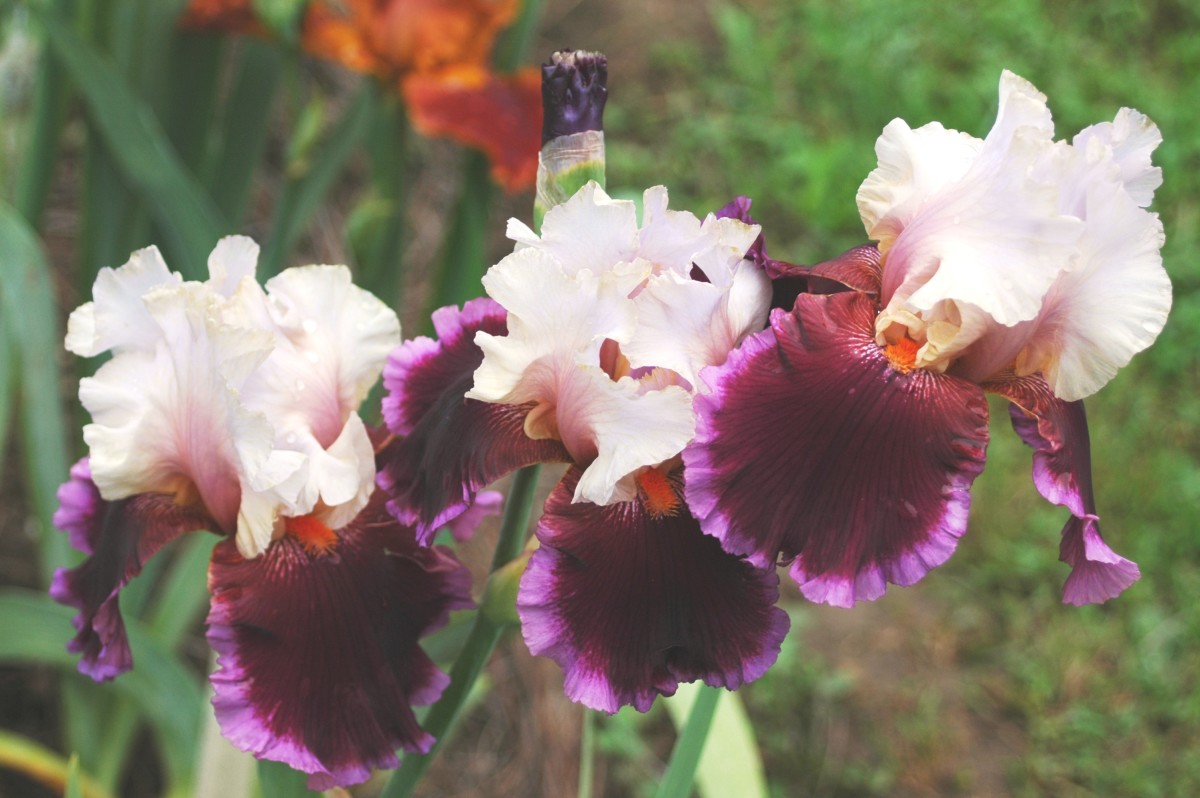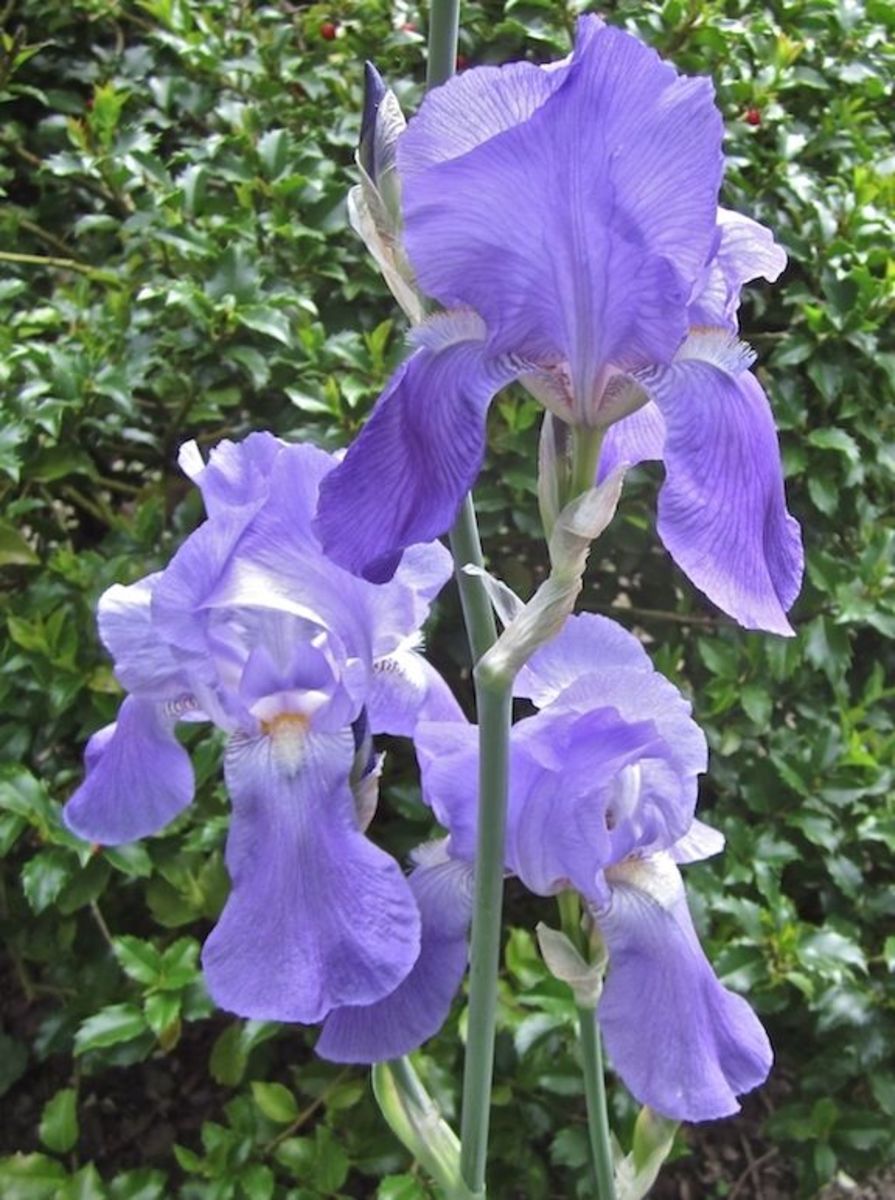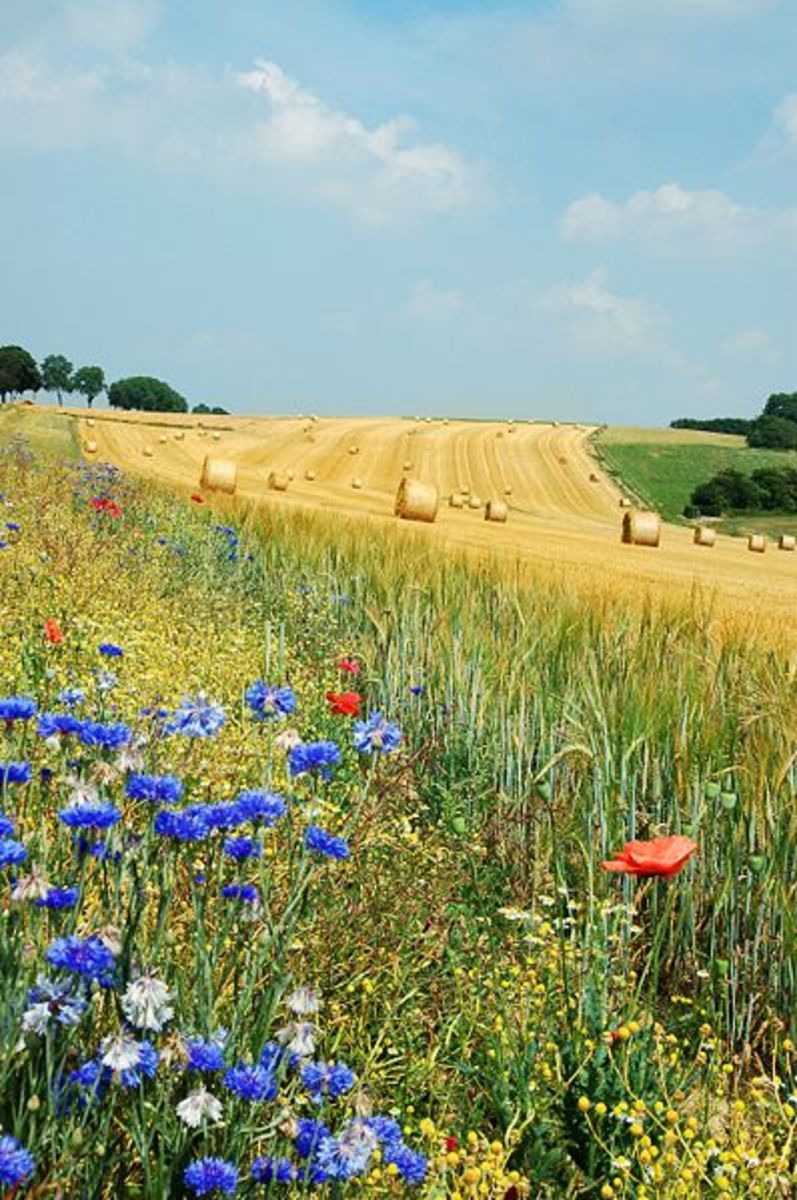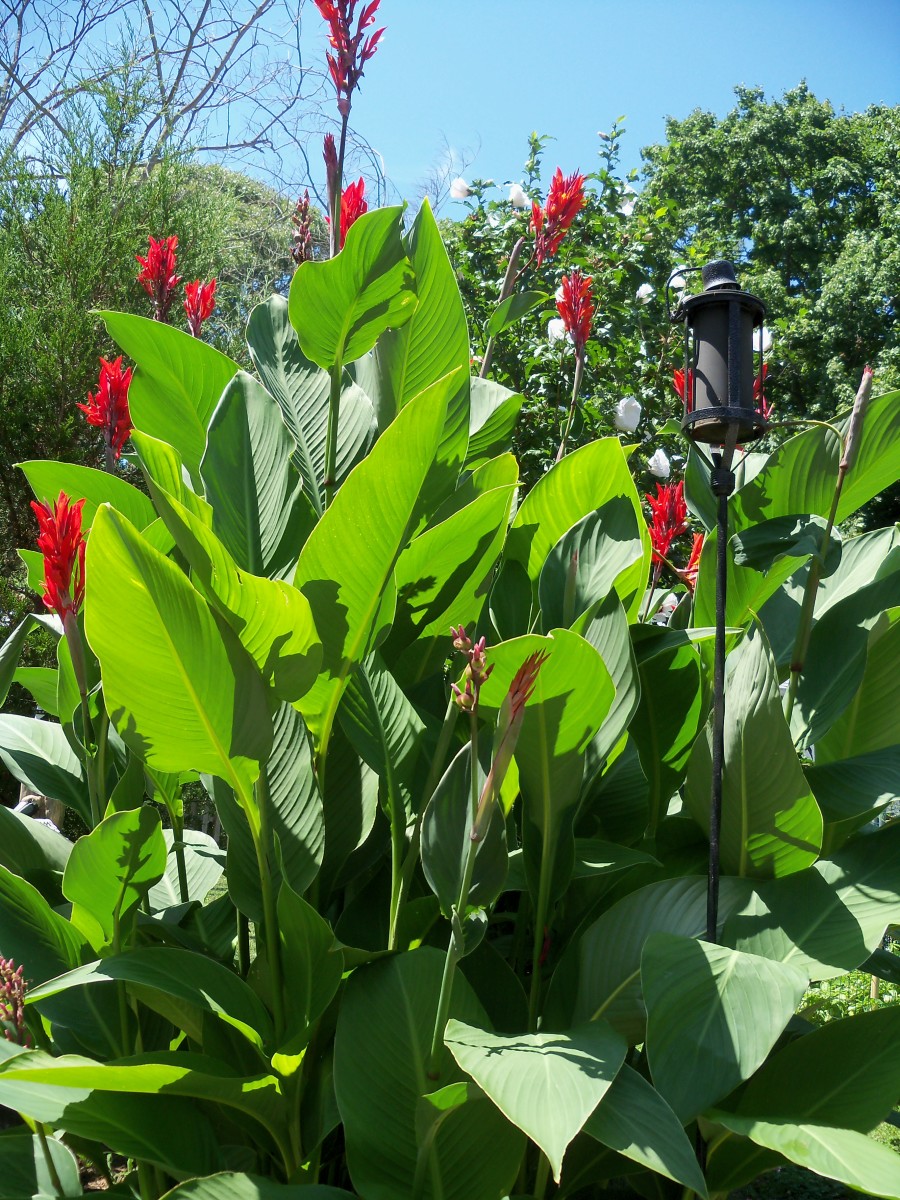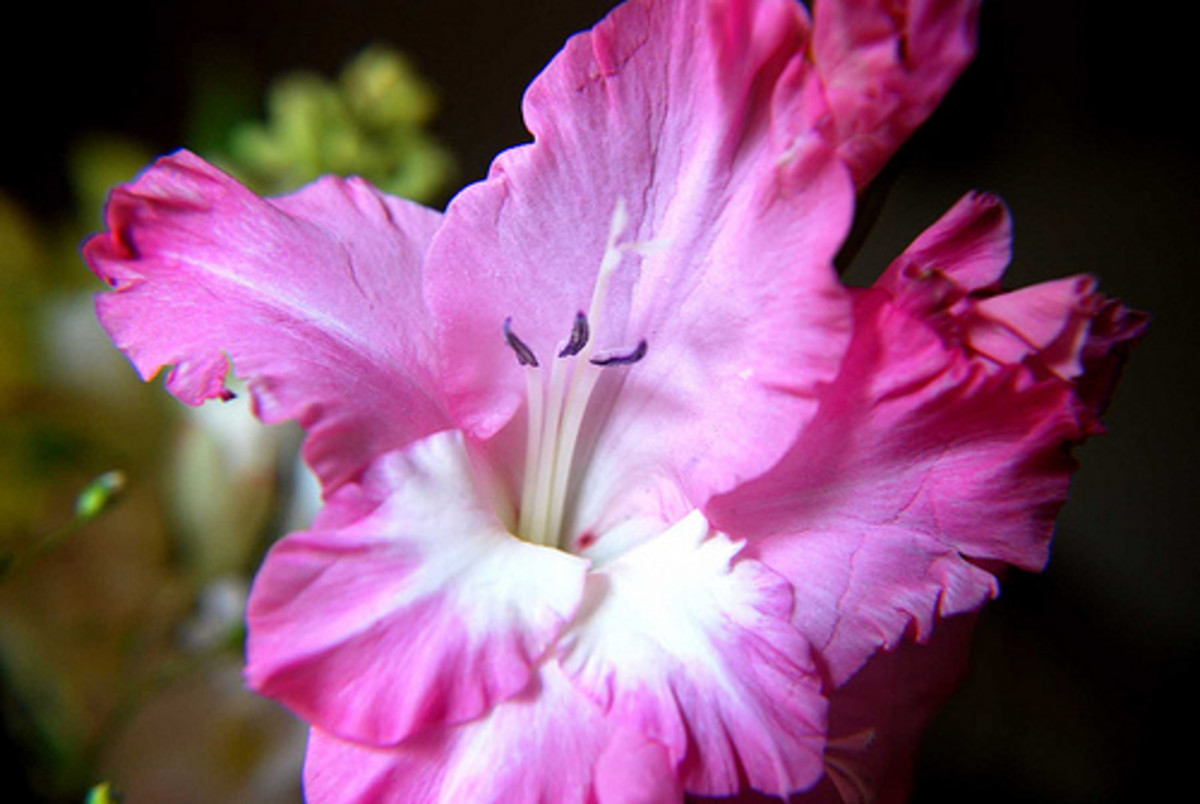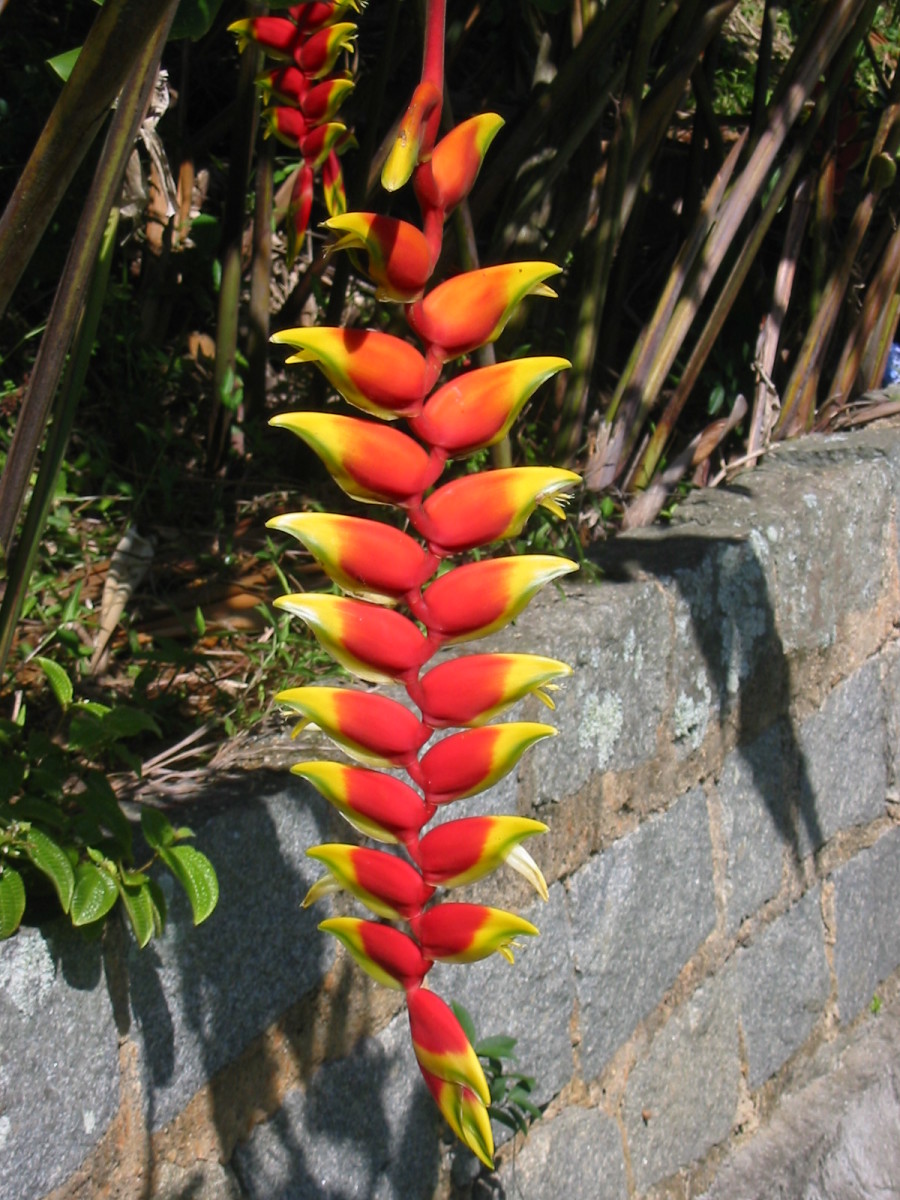Iris Palustris or yellow water flag: its spectacular flowering





One of the most handsome wild flowers of Europe, its common name is "Yellow water flag" in english and "Giaggiolo" here in Italy, while the scientific name is "Iris Palustris".
The iris is a flower of great beauty. The petals are translucent enough to allow light to shine through, brilliantly coloured, and three-dimensional in form. It belongs to the true water irises, which grow best with water over their crown throughout the year, even in fall and winter. I think that water garden irises are amiable sorts that blend optimally with many other pondside plants, especially those that grow closer to the water surface and have delicate foliage; moreover, iris leaves serve to shade smaller inhabitants (like the marsh marigold) which shun the heat of the summer sun; furthermore this iris is highly efficacious in removing any sort of pollution from the ponds. It is for sure, and not only in my opinion, the central landscape plant for the water garden.
It is native of West Asia, Nord Africa and most of Europe, including the British isles, where it is commonly found in marshes, swamps, ditches and at the edges of slowly flowing streams and rivers, in wet meadows and ponds. I think it is a beatiful flower to create a flowery bord all around a pond, natural or artificial, in the garden (the photos that I've took are all from an artificial pond in a garden).
It is an erect perennial, reaching a height of 40-150 cm; the sword-shaped leaves are about as tall as the scape. This form of the leaves, sword-shaped, suggested its name to the Romans in ancient times, who called this flower gladiolus, from the latin word "gladius", which exactly means "sword".
Each plant has groups of two or three large, showy, yellow flowers (it is the only yellow-flowered species in the Iris series), borne at the top of a tall, stout scape. They bloom from late April to July.
Below each group of flowers, there is a green spathe with a papery margin. The bumble-bees and the long-tongued flies are attracted to the flowers by the bright yellow perianth-segments and by the nectar that is secreted at their base. Functionally, the iris is composed of three separate units: on visiting a flower, the insect lands on one of the outer perianth-segments, which is marked with nectar-guides in the form of converging lines. As it moves forward, the insect bends back the flap-like stigma, transferring pollen which it has brought from another flower and, further on, it brushes against the anther, which dusts its body with fresh pollen...simply amazing!





Irises have been used symbolically for centuries in Europe and Asia. In greek mythology Iris is the name of the raimbow Goddess, who pass messages between the heavens and the earth; indeed she is the messenger of Zeus born in the Greek island of Crete, where the earliest known depiction of iris exists. In doing so, Iris let her scarf scatter the fields below with the colours of the raimbow, and that is why there are so many varities of irises, all with wonderful colours. It was said that, just as the god Hermes free the soul from the body at the time of death for mortal men, so do Iris for the women at the time of their death: it is because of this that in ancient times these flowers were planted on the graves.
According to one legend, the name date back to the end of the fifth century, during a time when Clovis, the king of the Franks, a people who lived along the lower part of the Rhine, was at battle with the Goths. Being hemmed in, Clovis was shown where to safely cross the Rhine by the presence of the yellow flag iris, the Iris pseudacorus. Afterwards he took it as a mascot. Later, during the twelfth century, the iris was incorporated by the French king Louis VII into the royal coat of arms and renamed "Fleur-de-Louis". Then, during the fourteenth century the English king Edward III added the iris to his royal coat of arms during the battles to gain the throne from the french king Philip VI. The iris remained in the british coat of arms until 1801.
In their abstract form, irises can be found in ancient Persian embroidery and on tiles and pottery. In Japan irises have been used for centuries during festivals, and they have been frequentely incorporated into embroideries and paintings, as well as being carved into crystal and jade.
Irises are mentioned in literature: Shakespeare's play "Anthony and Cleopatra" refers to the iris as the 'vagabond flag', which indeed it is. Lord Byron also mentioned iris in his poem 'Childe Harold's Pilgrimage':
"Heaven is free
from clouds, but of all colours seems to be
melted to one vast iris of the West,
where the day joins the past eternity."



For centuries irises have been used in Europe and North America for medicine.
The roots were once used to scent lines clothes. They are used also as a source of tannin and blue and black dyes: the roots, when mixed with iron sulphate, produce a black dye that is black enough t be used as a printing ink. The flowers offer a yellow dye.
The iris pseudacorus produce iridin, or irisin, an odourless, bitter-tasting compound. At one time it was used in a cure for syphilis, infections of the skin and dropsy (edema). Today is still an official drug to purge the liver. Up to now rhizome extracts of this iris are prescribed in homeopathic medicine as a soothing remedy for differents forms of psychic ailments, depressive migraine etc.
The root of irises are known as orris root. In medieval times orris root was generally mixed with other herbs, such as hyssop, and honey, and used to treat stomach problems and skin disorders such as scrofula, which causes boils on the neck. In the mid-seventeenth century Nicolas Culpeper and John Gerard documented the different ways in which orris root was used: it could be made into a potion to clear the body of phlegm, cramps, convulsions and dropsy, and to cure choler and snakebites. To make the potion more palatable, it could be weakened with ale or wine.
During the nineteenth century orris root was cut into beads and bandaged on wounds that needed to be kept open. It was used to alleviate bad breath. Chopped into thin sticks, the root was given to babies to chew during teething. Today it is still grown commercially in southern Europe and Morocco and used in toothpaste, tooth powder and teething rings, but its most common use is in cosmetics and perfumes. Pliny the Elder, the renowned Roman scholar, mentioned that the iris was used as an ingredient in perfume for wealthy people. It is still used today by the perfume industry as an essential oil and a fixative for other scents; it can be included in potpourri and scented sachets.
Minced rhizomes mixed with couscous, a popular dish in North Africa, to serve as a condiment and to increase the girth of women, are very popular in these zones. The powdered root was once used as a snuff and as a breath freshener.
English use the root for toothache; the Moroccans consider it a general antidote to poisons- they also mix the powdered rhizome with vinegar as diuretic and purgative; the North Africans boil the fragmentes rhizomes for rheumatism and sciatica.
It has also culinary virtues: iris have been used as flavouring; Chianti, a local wine of Florence, was once flavoured with the root, as Greeks and Romans used to do with their wines. A piece of the root was placed into the vats to flavour the wine as it aged. The root has been used to flavour vermouth, gin and some aromatic brandies. As a cooking ingredient, the leaves make a good sauce for fish, and the seeds, if peeled and roasted, can be used as a substitute for coffee.


